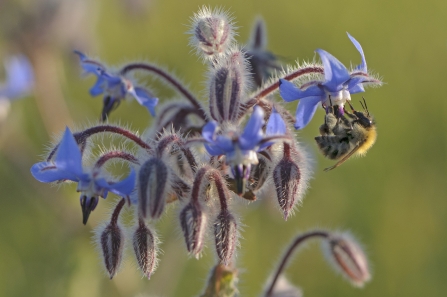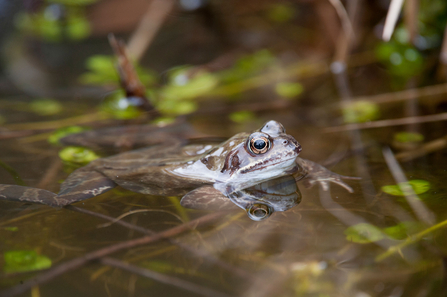We need bees
Everyone had heard of the honey bee, but you might be surprised to learn that there are over 240 species of other bees in the UK!
These include 25 bumblebees and an amazing 224 species of solitary bees, which come in many colours, shapes and sizes.
It’s no secret that bees and other pollinators are facing significant threats from habitat loss, disease and the overuse of pesticides. You don't need to be a beekeeper to help bees! With a little work, your garden can serve as a fantastic habitat for a wide range of wild bee species throughout the year.
Did you know that bees provide us with every third mouthful we eat? Without them, we couldn't grow foods like tomatoes, blueberries and strawberries
Helping bees in your garden
It's easier than you think to make your garden a haven for bees and other pollinators!
Bee friendly flowers
Feed the bees! Plant a diverse range of nectar-rich flowering plants and shrubs that bloom at different times of the year.
Great bee friendly flowers include borage, cornflowers, seedum, sunflowers, ivy, Aubretia, scabious, hebe, winter flowering crocus and winter flowering hellebore.
Bumblebees
Bumblebees with shorter tongues need short, open flowers with nectar within easy reach.

© Chris Gomersall/2020VISION
Create nesting sites
From minors to masons, different bee species choose a variety of places to set up home. Provide long and short grass in your garden as both serve as potential nesting sites for different species of bee.
You can now buy a variety of artificial homes for bees and other insects, or you could to make your own!
Encourage natural predators
Try to avoid chemicals like pesticides or fungicides in your garden. Instead, encourage natural predators. Log piles are great for beetles, as are compost bins, which also take care of your food waste!

© Amy lewis
Provide a water source
Can you create a wildlife pond? Or alternatively, how about a pot sunk into the ground, or a bird bath containing a few submerged rocks, to enable bees to reach the water?

© Mark Hamblin/2020VISION
Bee identification


